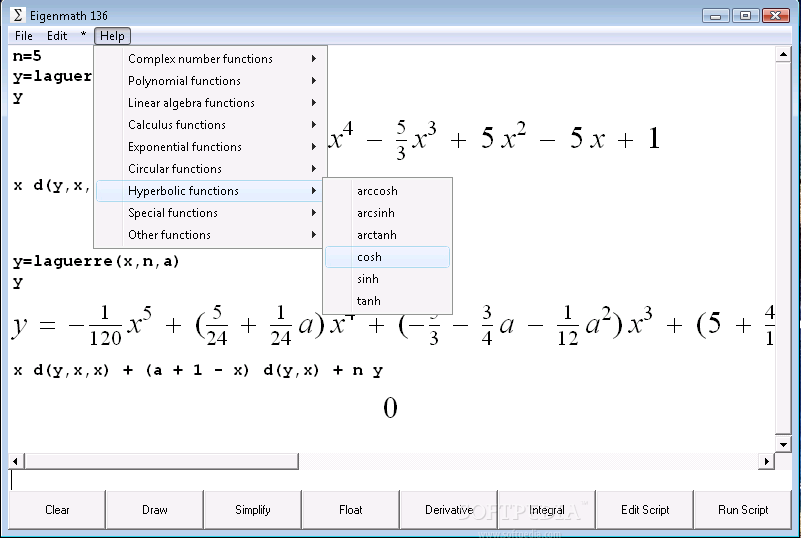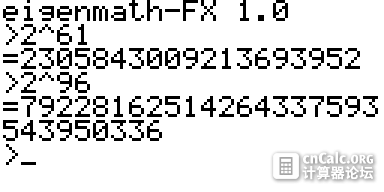

I have it installed on my CG50, but I am having some issues with it.ġ. * programming with Python-like syntax, including a step by step debugger * exact eigenvector/eigenvalues (vs numeric in Eigenmath) * solve equations, systems, differential equations, recurrences * discrete symbolic sums like sum(k^2,k,1,n) * much more antiderivatives: integrate works with algorithms, not with a table of integrals.
#Eigenmath 1.37 series#
* asymptotic series expansion (Taylor expansion at infinity) Eigenmath, here is a non exhaustive list: I planed do that in a couple of days, just to make sure there is nothing evident to fix (consider the current version as a release candidate).Īs for what it can do w.r.t.
#Eigenmath 1.37 code#
The following code checks E = K + V for n, l,m = 7, 3, 1.Welcome to Cemetech, parisse, and thank you for sharing this with us! Would you consider uploading KhiCAS to the relevant folder in our Downloads section? I'm also curious what it adds on top of Eigenmath, given how much I've enjoyed gbl08ma's port of Eigenmath to the Casio Prizm. The general form can be expressed as the product of a radial wavefunctionR and a spherical harmonic Y. Where L is a Laguerre polynomial, P is a Legendre polynomial and l and mare integers such that

The Laplacian operator in sphericalcoordinates is Where n is an integer representing the quantization of total energy and ris the radial distance of the electron. Hydrogen wavefunctions ψ are solutions to the differential equation The symbolsf and h are used as temporary variables. The following Eigenmath code computes the surface integral. By the right handrule, crossing x into y yields n pointing upwards hence Note that the surface intersects the xy plane in a circle. Where F = xy2zi− 2x3j+ yz2k, S is the surface z = 1−x2− y2, x2 + y2 ≤ 1and n is upper.2 (In this model, the z direction points downwind.)By the properties of the cross product we have the following for the unitnormal n and for dA.įor example, evaluate the surface integral∫∫SF Let S be the surface of the sailparameterized by x and y. Theintegral sums over the entire area of the sail.



 0 kommentar(er)
0 kommentar(er)
